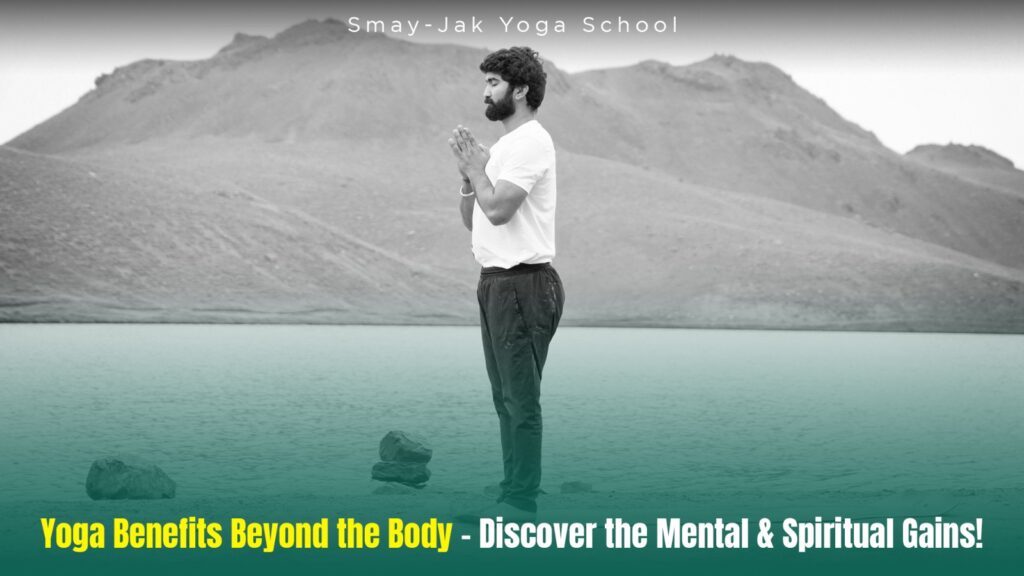Polycystic Ovary Syndrome (PCOS) and Polycystic Ovary Disease (PCOD) are hormonal disorders that affect many women worldwide, leading to symptoms such as irregular menstrual cycles, weight gain, acne, and hair growth. Managing these symptoms can be challenging, but incorporating specific yoga poses into a daily routine can help alleviate the discomfort and improve overall well-being. Here’s a guide based on Anand Yoga’s YouTube video, which provides accessible yoga practices to try from the comfort of your home. Yoga Asanas to Manage PCOD and PCOS Butterfly Pose (Baddha Konasana) This gentle, seated pose helps stimulate the pelvic region and stretch the inner thighs. It promotes blood circulation and can aid in reducing menstrual pain. How to Do It: Sit down with your feet pressed together, heels close to the body. Hold your feet and gently move your thighs up and down, like a butterfly’s wings. Try to keep the posture for as long as comfortable, breathing steadily. Benefits: Opens the hips and increases flexibility in the groin and inner thighs, supporting reproductive health. Half Lord of the Fishes Pose (Ardha Matsyendrasana) This twisting pose stimulates the abdominal organs and helps in detoxifying the body, which is beneficial for managing hormonal balance. How to Do It: Start by sitting with one leg bent in front and the other leg bent over it. Twist your torso, placing your opposite hand on the raised knee and your other hand behind you. Use a strap if needed to hold the foot if flexibility is limited. Benefits: Encourages digestion and massages the abdominal organs, enhancing hormonal regulation. Fist Pose (Muktasana) This asana massages the lower abdominal area, helping stimulate digestion and relieve bloating, which is often a concern with PCOD and PCOS. How to Do It: Sit in Vajrasana (kneeling pose) with your fists placed on either side of your navel. Inhale, tighten your stomach, and exhale as you fold forward, keeping your fists pressed against your abdomen. Hold this position while breathing steadily. Benefits: Improves insulin sensitivity and helps manage weight by activating the abdominal muscles and organs. Camel Pose (Ustrasana) Camel Pose stretches the entire front of the body, which enhances flexibility and supports overall hormonal balance. How to Do It: Kneel on the mat with your hands on your hips. Inhale, push your chest upward, and reach back to touch one heel with each hand, looking back and maintaining a firm grip. For beginners, start by placing one hand at a time on each heel. Benefits: Opens up the chest, stretches the abdominal muscles, and helps release tension, aiding in mental relaxation. Leg Raises (Uttanpadasana) Leg raises engage the abdominal muscles, which is crucial for strengthening the core and stimulating the reproductive organs. How to Do It: Lie flat on your back with your arms at your sides. Slowly lift both legs to a 90-degree angle, hold briefly, and then bring them back down in a controlled manner. Benefits: Strengthens the abdominal and lower back muscles, which can help regulate menstrual cycles and improve circulation to the pelvic area. Bow Pose (Dhanurasana) Bow Pose offers a deep stretch to the entire back and promotes flexibility in the spine and pelvis, which is beneficial for alleviating PCOD/PCOS symptoms. How to Do It: Lie on your stomach, bend your knees, and reach back to grab your ankles. Lift your chest and legs off the ground, balancing on your abdomen. Hold this position while breathing deeply. Benefits: Improves digestion, reduces bloating, and stimulates the reproductive organs, helping manage weight and hormone levels. Tips for Practicing Yoga with PCOD/PCOS Use Props if Needed: If flexibility is an issue, use props like cushions, bolsters, or straps to support your body and make the poses more comfortable. Consistency is Key: Practicing these asanas daily can bring about gradual improvements. Try to hold each pose for at least 15-30 seconds. Modify Asanas for Comfort: If any pose feels too challenging, modify it according to your comfort level. For instance, using a wall for support in some poses can help maintain balance. Dietary Suggestions: Avoiding deep-fried and oily foods can reduce inflammation and balance insulin levels, which is essential for managing PCOD/PCOS symptoms. Final Thoughts These yoga practices, combined with mindful eating and a balanced lifestyle, can help manage the symptoms of PCOD and PCOS. Patience and regular practice are essential, as yoga helps improve circulation, enhance flexibility, and support hormonal balance over time.









